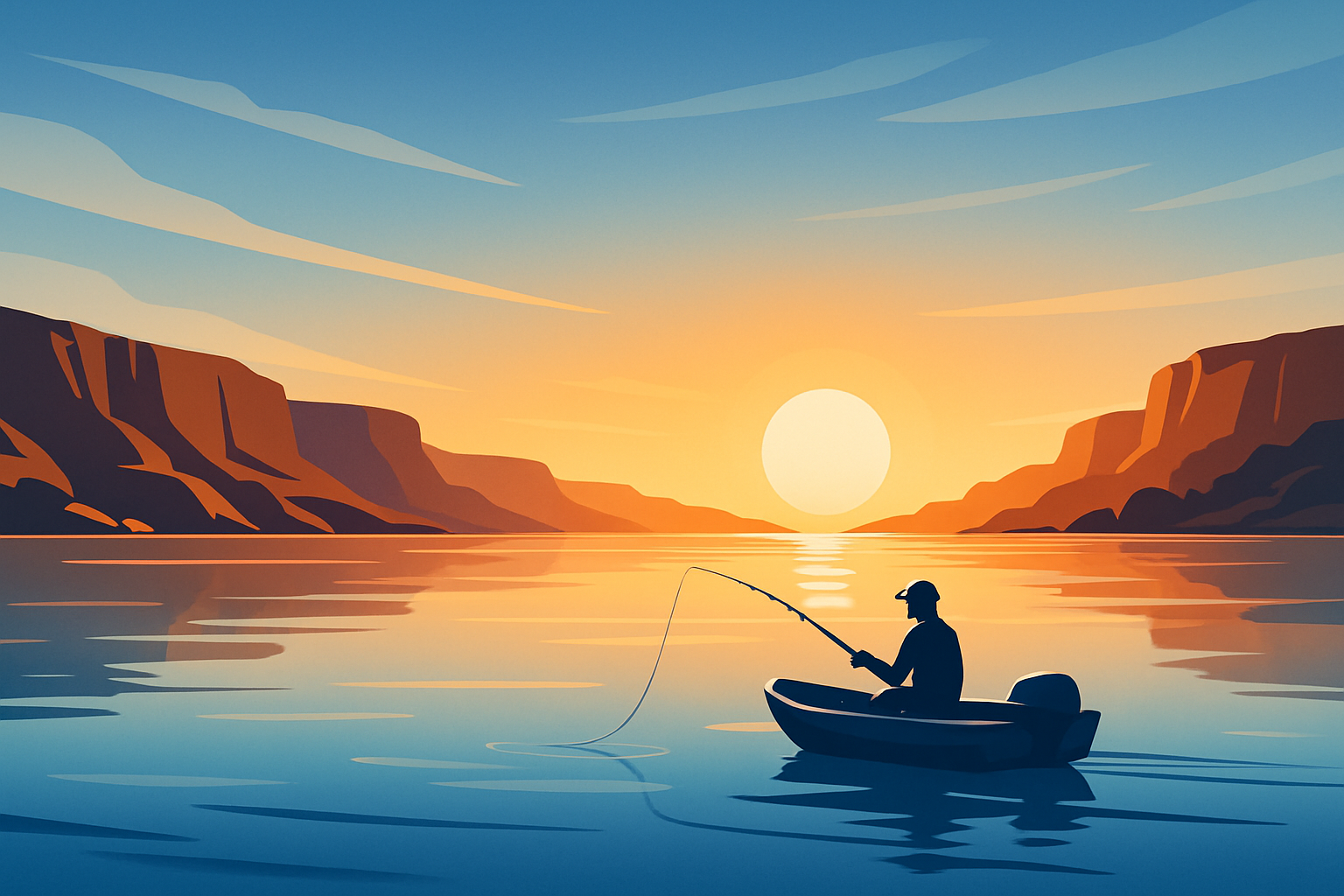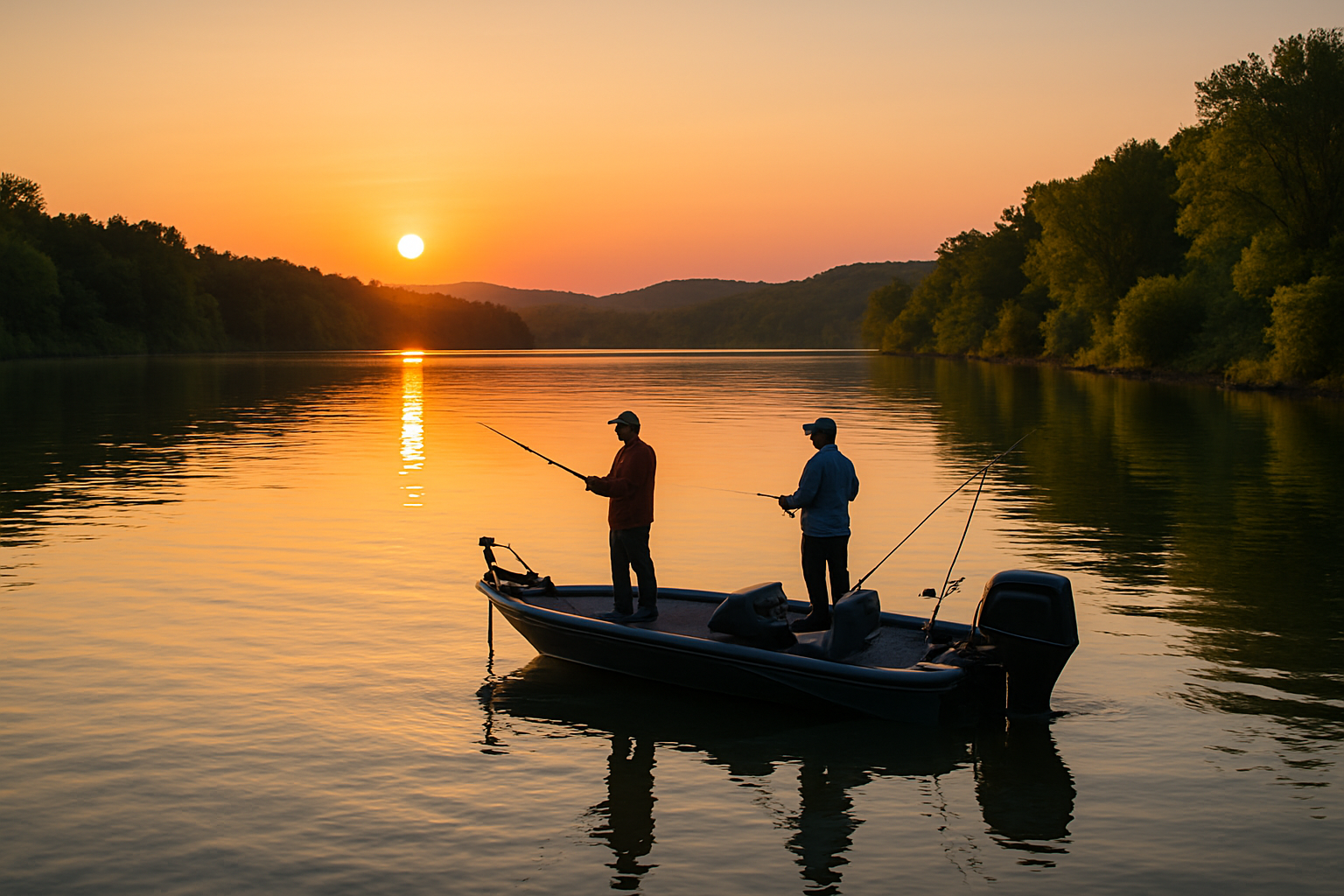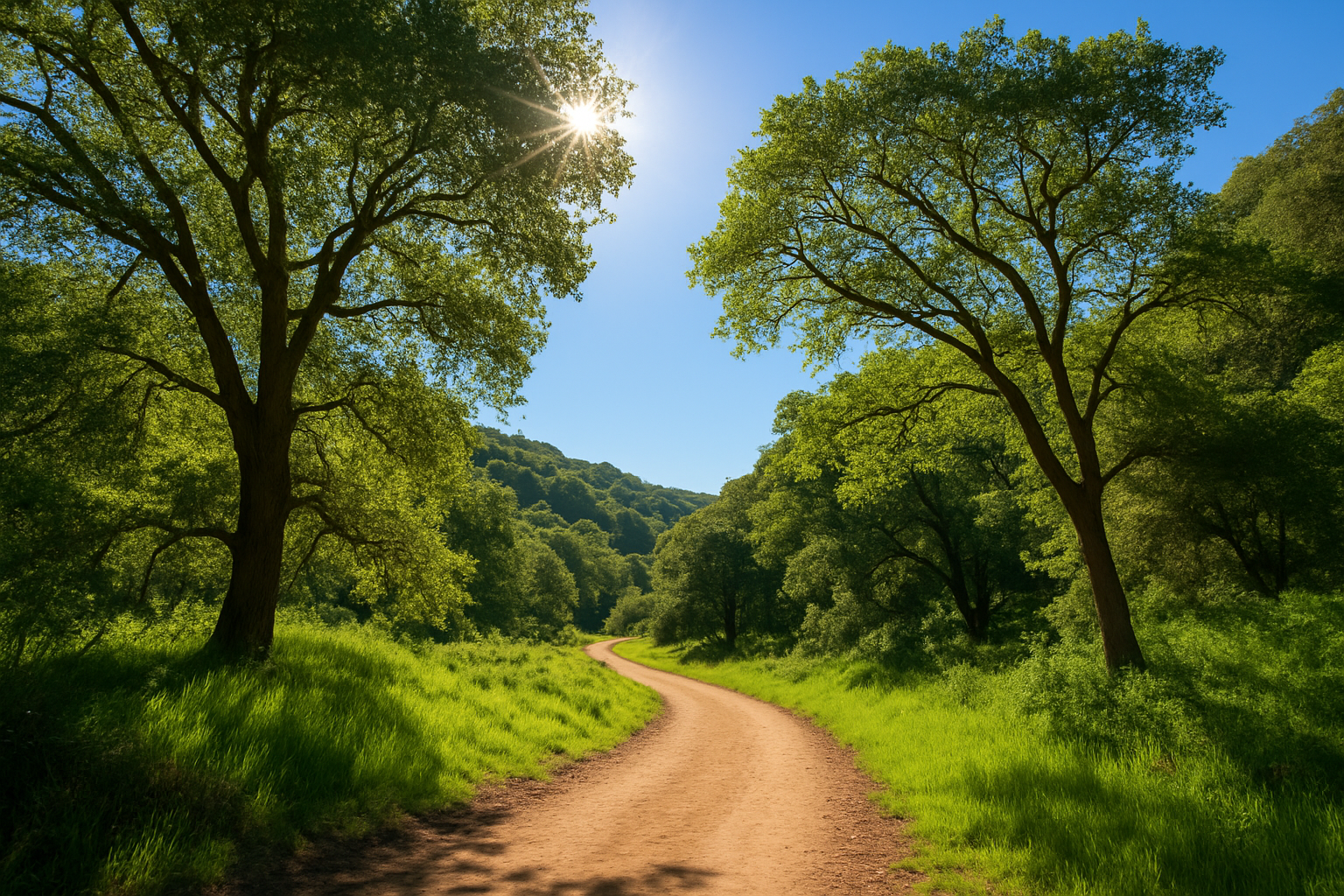Lake Meredith Fishing Guide for Texas Panhandle

This guide has got you covered with everything you’ll need for an enjoyable and fruitful fishing trip to Lake Meredith.
- Dive into Lake Meredith’s top fishing spots and seasonal rhythms for bass, catfish and crappie nestled in the Texas Panhandle.
- Get the lowdown on key techniques like throwing topwater lures for bass and setting up bottom rigs for catfish to up your catch game.
- Check out gear recommendations tailored to the lake’s diverse species and ever-changing water moods.
- Pick up essential regulations and tips for fishing responsibly because keeping the lake’s ecosystem happy is a win for everyone.
Lake Meredith, tucked away in the Texas Panhandle, offers a memorable freshwater fishing experience. This scenic lake has a nice mix of fish species, shorelines that are easy to access and facilities kept in good shape. It's a go-to spot for anglers whether you're just starting out or have been at it for years.
Tucked away in the semi-arid Texas Panhandle, Lake Meredith came into being thanks to the damming of the Canadian River. The scenery is a charming mix of sprawling plains and rugged mesas with water levels that rise and fall depending on whether rain blesses the area or drought takes hold. Around the lake you will find a resilient ecosystem that supports a diverse lineup of aquatic life including fish species that have learned to thrive through the lake’s warm summers and dry winters.
Lake Meredith Basics You Should Know as an Angler
If you’re gearing up for some fishing adventures, Lake Meredith is definitely a spot worth knowing about. It’s got its quirks and charms, and a little insider knowledge goes a long way when you’re casting your line. Let’s dive into the essentials every angler should keep in their back pocket before heading out.
Spanning over 27,000 surface acres, Lake Meredith boasts a diverse shoreline with rocky bluffs, sandy beaches and cozy deep coves. Water levels do ebb and flow but usually stick around just right for fishing year-round.
- Located about 30 miles north of Amarillo, Texas near the small towns of Fritch and Borger.
- Spanning roughly 27,000 surface acres with more than 130 miles of shoreline to explore.
- Water levels can be a moving target that shifts with the seasons because of weather and water use.
- The semi-arid climate brings sizzling hot summers and mild winters which keep fish on their toes.
- Several public access points welcome visitors including boat ramps and shoreline spots perfect for casting a line.
- Boating rules are firmly in place and enforced to keep everyone safe and the environment happy.
- Seasonal fish movements affect when and where you’ll have the best luck at the lake—timing is everything here.
Key Fish Species You will Find Swimming Around in Lake Meredith
Lake Meredith hosts a wonderfully diverse mix of freshwater species that seem right at home in its environment. You will often spot largemouth and smallmouth bass thriving around the rocky spots, while white bass make a lively appearance during their spring runs. Meanwhile, the popular catfish species prefer hanging out in the lake’s deeper channels.
| Fish Species | Preferred Habitat | Ideal Fishing Seasons | Recommended Bait/Lures | Average Size |
|---|---|---|---|---|
| Largemouth Bass | Shallow rocky shores and cozy coves | Spring and early summer | Plastic worms and crankbaits | Typically 2 to 5 lbs |
| Smallmouth Bass | Clear, rocky spots where the water sings | Late spring through summer | Jigs and spinners | Usually 1 to 4 lbs |
| White Bass | Open water near lively inlets | Early spring and fall | Shad imitation lures and spoons | Around 1 to 3 lbs |
| Channel Catfish | Deep holes and meandering river channels | Summer nights and spring | Cut bait and chicken liver | Often 5 to 15 lbs |
| Blue Catfish | Deep waters and dam areas where the big ones lurk | Summer | Live bait and those infamous stink baits | Generally 15 to 30 lbs |
| Crappie | Timber and submerged brush piles — perfect hiding spots | Spring and late fall | Small jigs and minnows | Usually 1 to 2 lbs |
| Walleye | Deeper, chillier waters that keep them comfy | Early spring and fall | Jigs and live baitfish | Typically 3 to 7 lbs |
- Largemouth bass usually hang near rocky points and spots with submerged timber—they seem to like a little cover.
- Smallmouth bass prefer clearer waters with plenty of rocks and stronger currents to keep things lively.
- White bass get busy during their spawning runs in spring and sometimes have a surprise party again in the fall.
- Catfish species are more likely found in the deeper parts of the lake. If you’re a night owl fishing, you’ll often have the best luck catching them after dark.
- Crappie like to hang around submerged brush piles and fallen trees in the spring—a bit of natural shelter.
- Walleye numbers have been steadily climbing. They usually favor cooler, deeper water, especially during spring and fall.
- Keeping an eye on fish population trends is smart for any angler as it helps tweak tactics and gives you a better shot at landing that trophy catch.
Key Fishing Techniques for Lake Meredith That Actually Work
Fishing successfully at Lake Meredith is all about tailoring your approach to each species and the lake’s unique vibe. Anglers often discover that nailing topwater lures really gets bass biting, while dropping a jig in the deeper holes tends to lure in crappie and walleye like clockwork. Trolling out in the open water usually does the trick for white bass, and good old bottom fishing with bait is a reliable way to reel in catfish.
Give topwater plugs and poppers a try around dawn and dusk because those are the best times to spark feisty bass strikes that get your heart racing.
When you’re near submerged structures, slow jigging works best to tempt crappie and walleye out of hiding like coaxing a shy friend to join the party.
Troll along mid-depth channels using crankbaits or spinner rigs where white bass like to hang out. Think of it as fishing where the locals gather.
After dark set up bottom rigs baited with live or cut bait to reel in catfish who seem to enjoy a late-night snack.
In the heat of summer target bass by swinging by submerged timber and rocky shorelines with finesse plastic worms because a subtle touch often pays off big time.
Mix up your retrieval speeds and switch lure types as the seasons change. Fish can be moody when water temps and their behavior shift, so staying flexible keeps you one step ahead.
Lake Meredith's water levels and temperature shifts really throw a wrench into fish behavior in the best way for anglers paying attention. When the water drops you’ll often find fish clustering in deeper pools near the dam and winding river channels. This is prime time for trolling and jigging to shine. On the flip side, when the water rises bass and crappie like to spread their wings a bit and head into flooded vegetation and cozy coves. Tweaking your strategy by changing lure depth, speed of retrieval and fishing spots based on the water temperature can genuinely up your game. Cooler water tends to slow fish metabolism so taking it slow with your presentation usually pays off. Meanwhile warmer water turns the fish into eager feeders so faster livelier lure moves are the way to go.
Essential Gear and Tackle You’ll Want for Fishing at Lake Meredith
Choosing the right gear really makes all the difference when you are tackling the variety of fish and changing conditions at Lake Meredith. Medium-action rods paired with versatile spinning or baitcasting reels cover most species well. Line strength usually swings from light monofilament great for crappie to sturdier braided lines when you’re after feisty catfish. Keeping a wide range of lures on hand from jigs to topwaters lets you stay nimble and ready to switch things up on the fly.
- Medium-action spinning and baitcasting rods usually between 6'6" and 7'6" are ideal for targeting a variety of species.
- Reels with smooth drag systems help when you are in a long tug-of-war with a catfish because maintaining control makes a big difference.
- When fishing for bass and crappie, 6-12 lb test monofilament or fluorocarbon line works well. Twenty to 30 lb braided line is better suited for bigger tougher catfish.
- It is smart to have a mix of lures like plastic worms, crankbaits, spinnerbaits, jigs and topwater plugs because you never know which one will get a bite.
- Live bait such as minnows, shad and cut bait often works best for catfish since they cannot resist it.
- Do not forget essentials like polarized sunglasses to reduce glare, a well-stocked tackle box, a handy fish finder and a sturdy net to scoop up your catch.
Give your gear a once-over make sure your lines are free of pesky knots or any signs of wear, and that your reels are well-lubricated so you don’t run into any annoying hiccups once you’re out on the water.

Anglers fishing at Lake Meredith during sunrise, highlighting serene water and fishing activity
Best Fishing Spots and Reliable Techniques You’ll Want to Know
Lake Meredith’s ever-changing landscape offers anglers many promising fishing spots to explore. You’ve got rocky outcrops where bass love to chill, deep basins that attract catfish, shoreline coves where crappie hide, and river inlets where schools of white bass gather like it’s happy hour.
- Fishing piers near Fritch Harbor make for super easy shore access and usually deliver some pretty solid bass fishing sessions.
- Boat ramps at Randall Creek and a few other spots give you a smooth ride out to those deeper waters where the fish like to hang out.
- Rocky outcrops along the north shore act like prime ambush spots, just waiting for bass to make their move.
- River inlets and creek mouths often turn into bustling hangouts for schools of white bass during their migration—it's like a fishy traffic jam.
- Deep water basins close to the dam tend to be home turf for those big catfish and walleye, making it worth the effort to cast out there.
- Shoreline areas with submerged brush and fallen timber are known gems for crappie, creating cozy little hideouts that the fish cannot resist.
Anglers really lean on GPS mapping and sonar to zero in on underwater structures and fish schools and the prime depths where the fish like to hang out. Fish finders, those trusty gadgets also reveal thermoclines and hidden patches of submerged vegetation which makes it a whole lot easier to place bait just right.
Rules Permits and Conservation Guidelines You Really Need to Know
Fishing at Lake Meredith means following Texas state rules like having a valid fishing license and watching size and bag limits. You must also be mindful of seasonal closures. Boating and safety regulations are there to protect anglers and the environment.
- If you are 17 or older, you’ll need a Texas fishing license to cast your line—no exceptions.
- Catch and release is often encouraged for certain species during spawning seasons to give those fish a fighting chance and keep the population thriving.
- Minimum size limits are set for bass and catfish to protect the big breeders—because we all know the big ones are the real MVPs.
- Boating rules cover speed limits and no-wake zones near shorelines, so you can keep the peace and the fish happy.
- Some species are protected or come with restrictions, so it’s always wise to double-check the latest regulations before you head out it saves you a headache later.
Fishing responsibly and backing conservation efforts are vital to keep Lake Meredith’s ecosystem thriving and vibrant for future anglers. It’s a simple but important ask: properly toss out your fishing line, respect the natural habitats and lend a hand to local conservation projects whenever you can.
Extra Amenities, Services, and Attractions Close By That You will Actually Want to Check Out
The area around Lake Meredith offers a wealth of support for anglers including marinas where you can easily rent boats. There are bait and tackle shops stocked with almost everything you might need and cozy campgrounds. You can choose from a variety of lodging options—from rustic cabins with a charming back-to-nature vibe to comfortable hotels in nearby towns.
- Around Fritch and the nearby harbors, you will find several boat rental companies ready to help you get out on the water easily.
- Hiring a professional guide can make your trip truly unforgettable.
- Bait and tackle shops here are not just ordinary; they stock gear perfectly suited for the fish in Lake Meredith.
- Many campgrounds offer lakeside spots with amenities that accommodate everything from lightweight tents to large, comfortable RVs.
- The local eateries serve fresh fish dishes alongside classic Texan favorites, so you don’t have to choose between them.
- Lodging options include snug lakeside cabins that feel like a home away from home as well as hotels in Amarillo for those who prefer more city comfort.
Visitors often jump at the chance to explore nearby natural gems like Alibates Flint Quarries National Monument and the stunning Palo Duro Canyon. These spots are perfect for hiking and birdwatching and for soaking up the local culture of the Texas Panhandle.
Handy Tips for Anglers Diving Into Lake Meredith for the Very First Time
Getting ready for your first fishing trip to Lake Meredith involves rounding up the right gear and getting a feel for the usual weather. It also means zeroing in on spots that are friendly to beginners.
Gather the essential gear—rods and reels that fit the species you’re hoping to reel in, plus safety equipment.
Keep a sharp eye on local weather updates because conditions in the Texas Panhandle can change faster than you’d expect.
Consider hiring a local fishing guide. It’s a great way to pick up some insider tips and boost your confidence on the water.
Start at shorelines or piers that are easy to reach before venturing into deeper waters.
Practice catch and release to help keep fish populations healthy.
Always remember to respect the local wildlife and natural habitats. This is the best way to preserve the lake’s natural charm for everyone to enjoy.
"Many anglers new to Lake Meredith often find themselves wrestling with shifting water conditions, but if you hang in there and tweak your approach a bit, it usually pays off with some truly rewarding catches. Starting out with simple, straightforward techniques and soaking up tips from local guides can really turn rookies into confident, skilled anglers before you know it." – John Ramirez, Local Fishing Expert
Fishing Seasons to Keep on Your Radar for Lake Meredith
| Month | Peak Species | Recommended Gear | Typical Weather | Optimal Techniques |
|---|---|---|---|---|
| January | Catfish, Crappie | Medium rods, live bait | Cold, clear | Bottom fishing, slow jigging to coax those wary bites |
| February | Crappie, Walleye | Light jigs, minnows | Cool, steady | Jigging near submerged trees, a secret spot if you ask me |
| March | White Bass, Bass | Spinnerbaits, plastics | Mild, warming up | Trolling and topwater lures to chase the spring fever |
| April | Largemouth Bass | Soft plastics, crankbaits | Warm, somewhat variable | Shallow water casting, when the bass start to show up |
| May | Bass, Catfish | Medium rods, cut bait | Warm, humid | Topwater action and bottom rigs, keeping things lively on the water |
| June | Bass, Catfish | Heavy rods, braided line | Hot, dry | Early morning topwater—best time before the heat kicks in |
| July | Bass, Catfish | Jigs, live bait | Very hot, low water | Deep water jigging to beat the blistering sun |
| August | Smallmouth, Catfish | Medium-heavy tackle | Hot | Deep channels, bottom baiting, patience is key here |
| September | White Bass, Crappie | Trolling lures, jigs | Cooling off | Mid-depth trolling, when the temperatures start to dip |
| October | Bass, Walleye | Soft plastics, jigs | Mild, steady | Shallow to mid-depth casting—fall fishing at its best |
| November | Walleye, Catfish | Live bait, jigs | Cooling, steady | Jigging and bottom fishing, a slow dance on the water |
| December | Catfish, Crappie | Light jigs, live bait | Cold, clear | Slow retrieval, deep water—patience and a good jacket help here |
Adjusting your fishing approach to match Lake Meredith's seasonal changes is key to keeping your success steady. When the weather warms up at Lake Meredith, fish usually hang near the surface or along the shorelines. Throwing topwater lures or casting shallow tends to do the trick. Once the chill sets in, switching to bottom fishing with slower presentations often pays off.





